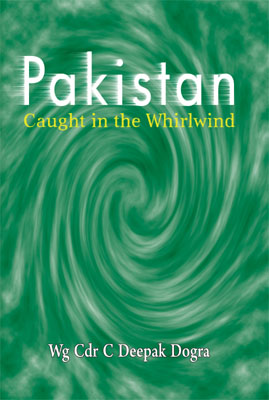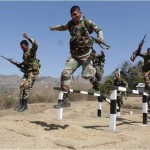IDR Blog
The road to nowhere: SAARC at 30
South Asian Association for Regional Cooperation (SAARC) is an eight member country regional grouping- India, Pakistan, Afghanistan, Bangladesh, Bhutan, Maldives, Nepal & Sri Lanka. Apart from permanent members, SAARC also has nine observer countries (Thirteenth SAARC summit, Dhaka 2005) namely, Australia, China, European Union, Iran, Japan, Republic of South Korea, Mauritius, Myanmar and USA.
In 1980, the idea of a South Asian regional grouping was mooted by the Bangladeshi president Ziaur Rahman. Fervent discussion between the South Asian countries followed, leading to the adoption of declaration of South Asian Regional Cooperation.
This was followed by the launch of Integrated Programme of Action in 1983, through which countries began to collaborate on areas such as- Agriculture, Rural Development, Telecommunication, Meteorology, Health & Population activities. The first SAARC Summit was held in Dhaka on the 7-8th of December in 1985 with the adoption of the charter and creation of SAARC as a regional grouping.
The purpose of such an association was to strive towards mutual economic, social and cultural development of the region. With the 31st SAARC Charter day observed on the 8th of December and the 30th anniversary of SAARC, it provides a timely opportunity to review/analyse the working of SAARC over the years.
According to the Charter, cooperation in SAARC is based on five principles such as respect for sovereign equality, territorial integrity, political independence, non-interference in the internal affairs of other states and mutual benefit. SAARC summits have led to adoption of a number of declarations that act as directives and mandate for regional cooperation.
South Asian region is marred with political rivalries, conflicts, issue of terrorism, poverty, unemployment etc. Within SAARC, five out of eight members- Bangladesh, Bhutan, Maldives, Nepal and Afghanistan come under the category of least developed countries. Indo-Pakistan’s protracted conflict over the disputed territory of Kashmir has blocked many attempts to regional integration in SAARC.
Even at the recently held summit in 2014 at Kathmandu, Pakistan refused to sign the proposed Motor Vehicle Agreement (MVA) due to certain domestic reservations. India along with Bangladesh, Bhutan and Nepal bypassed this and signed the BBIN Motor Vehicle Agreement.
Regional disputes: Blocking the effectiveness of SAARC
India-Pakistan cooperation is particularly vital in assisting Afghanistan to tackle terrorism and to assist in initiating peace talks with the Taliban, as this shall be in the greater interest of maintaining peace for the prosperity of the region as per the SAARC charter.
The recent India-Pakistan National Security Advisers meet was held in Bangkok on the 6th of December, where they discussed issues of terrorism, peace and security, Jammu & Kashmir as well as the need for tranquility along the LoC. Both agreed on the importance of a constructive bilateral engagement for a peaceful and prosperous South Asia. However, with the off and on hostile relationship that both nations share, the question remains as to how long this peaceful dialogue will continue.
The turbulent crisis in Nepal with the issue of the Madhesi’s non-inclusion in the constitution and the economic blockage of the Indo-Nepal border has led to strained bilateral relations. Thus, there is a strong presence of conflicting interests leading to bilateral disputes among the members that needs to be addressed so as to fulfill the objectives of the SAARC charter for the larger goal of strengthening the process of regional integration and development.
South Asia is the least economically integrated region compared to other groupings such as EU, ASEAN, ECOWAS etc. The South Asian Free Trade Agreement (SAFTA) was signed on 6th January 2004 during the 12th SAARC Summit held in Islamabad, Pakistan.
The Agreement entered into force in 2006, it was an attempt to reduce tariffs among the member countries under the trade liberalization programme (TLP) except on items that are included in the Members’ sensitive lists. Members also agreed to the elimination of para-tariffs and non-tariff barriers and the adoption of trade facilitation measures to remove barriers to cross-border movement of goods.
The move from SAPTA (South Asian Preferential Trade Agreement) to SAFTA was initiated as one of the subsequent transitions towards a South Asian Economic Union (SAEU). Presently, intraregional trade accounts for 5% of the total trade compared to other groupings. Thus, intra-SAARC trade is far below potential and requires further reduction of the size of sensitive lists in order to increase the quantum of regional trade.
One step forward, two steps back
Although a lot of steps have been taken by its members to boost the development and prosperity of the people as pointed out in Article 1 of the Charter. Initiatives such as the SAARC Food Bank were taken to provide emergency supply to nations facing crisis resulting from production shortfall or a natural calamity like cyclone, floods,’ draught, earthquake. However, SAARC food reserves have not been utilized despite the recurrent natural disasters occurring in Nepal, India, Bangladesh, Pakistan etc.
Talks on disaster risk reduction and management among members exist but there is a huge gap in implementation and coordination. A South Asian University (SAU) was established in 2010 under the auspices of SAARC in order to promote higher education within the region. A platform which shall provide world class facilities and professional faculty to students and researchers drawn from every country of the region.
At the recent 18th SAARC summit 2014, members were successful in signing the framework agreement on cooperation in power sector which will ensure electricity trading through grid connectivity, the main rationale behind this initiative was the impending domestic crisis faced by individual member countries.
Under this agreement, Pakistan, India, Sri Lanka and Bangladesh would be able to import electricity from hydropower-rich Nepal and Bhutan. Apart from that, Indian Prime Minister Modi also announced the creation of a SAARC Satellite for its south asian neighbours, which is slated to be launched by December 2016.
Slow process and lack of political will has stalled the functioning of SAARC, be it the cause of a SAARC Motor Vehicle agreement, a common SAARC visa etc. Instead, of a collective action, the pattern of bilateral arrangements is more frequent in the region based on mutual benefit, for example: the bilateral free trade agreements between the member countries.
This in a way highlights the situation of the region where political conflicts, concerns of security, power tussle particularly between India and Pakistan in comparison to the smaller member countries etc has hindered the process of coming together for the prosperity and stability of the South Asian region.
Despite a number of initiatives, the relevance of SAARC as a regional grouping has declined. The process of regional integration and economic development has slowed down due to political blockages. The declarations, policies, plan of action etc. generated from the discussion of head of states, ministerial conferences mostly exist on paper.
The need for implementation loses sight amongst the prevalent regional diplomacies. Thus, SAARC needs to review its agenda and strengthen its implementation process. It is essential to look inward and tap the potential for regional and economic development.
Courtesy: http://southasiamonitor.org/detail.php?type=sl&nid=14691





